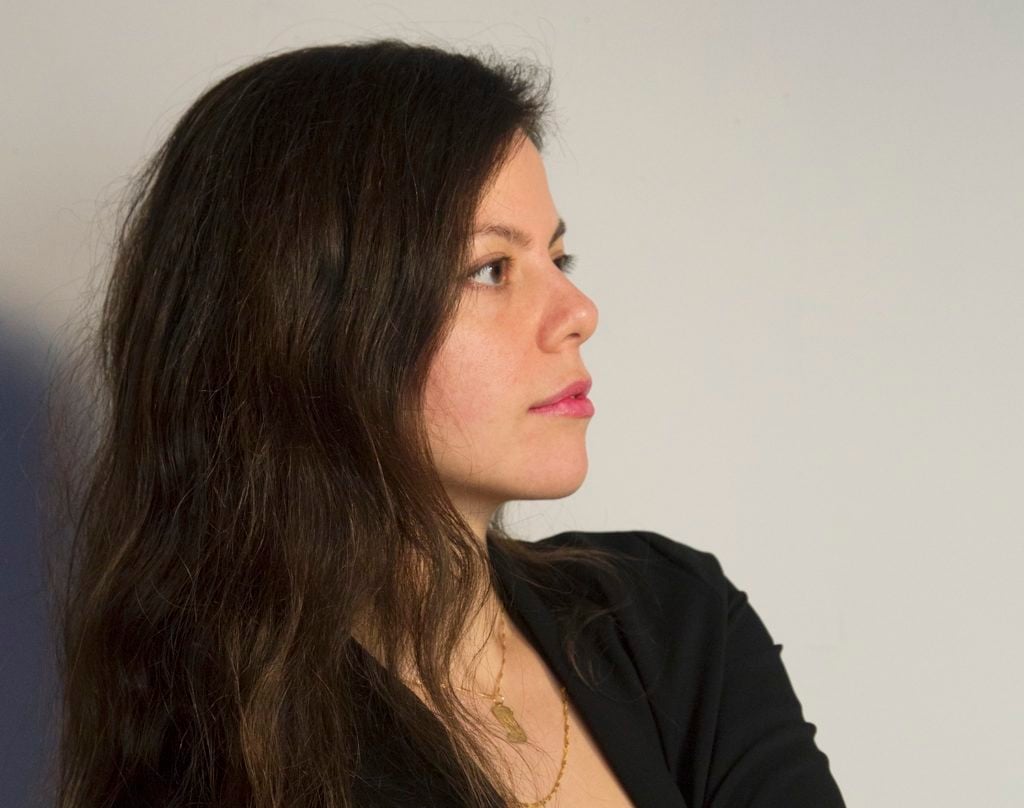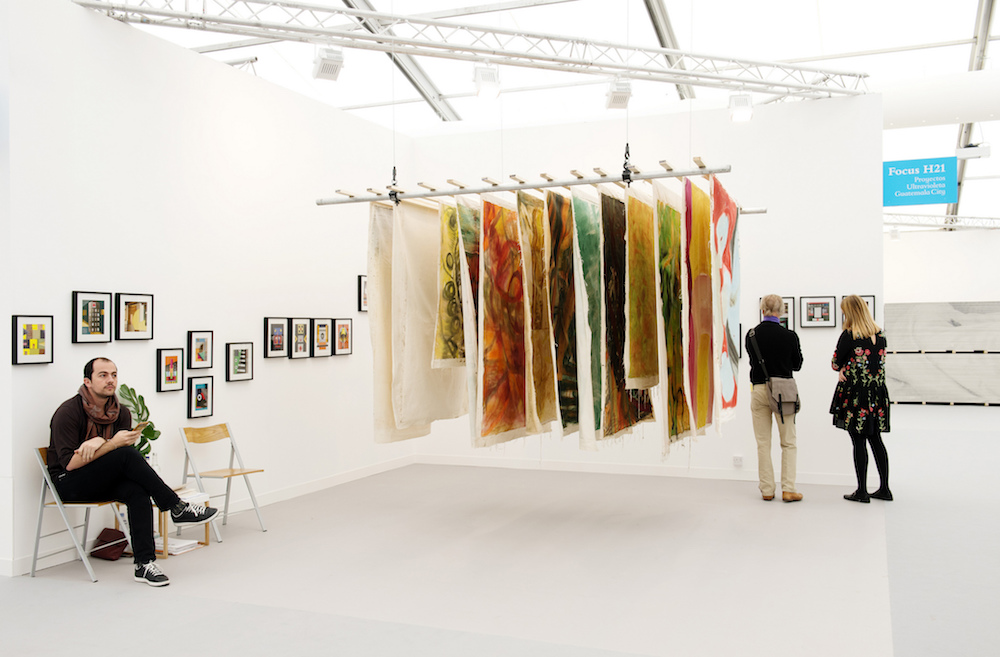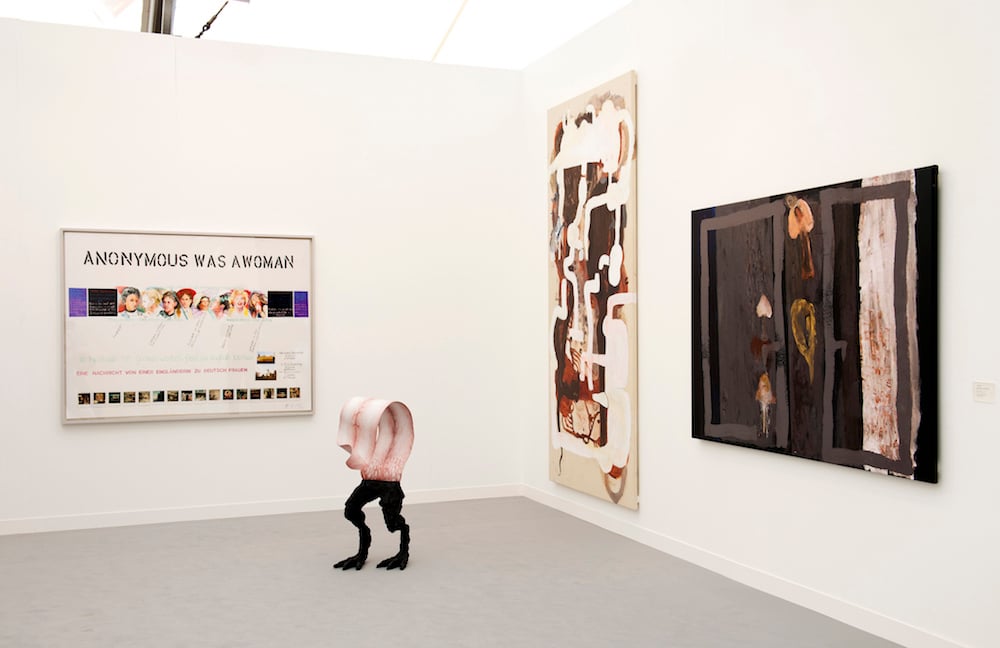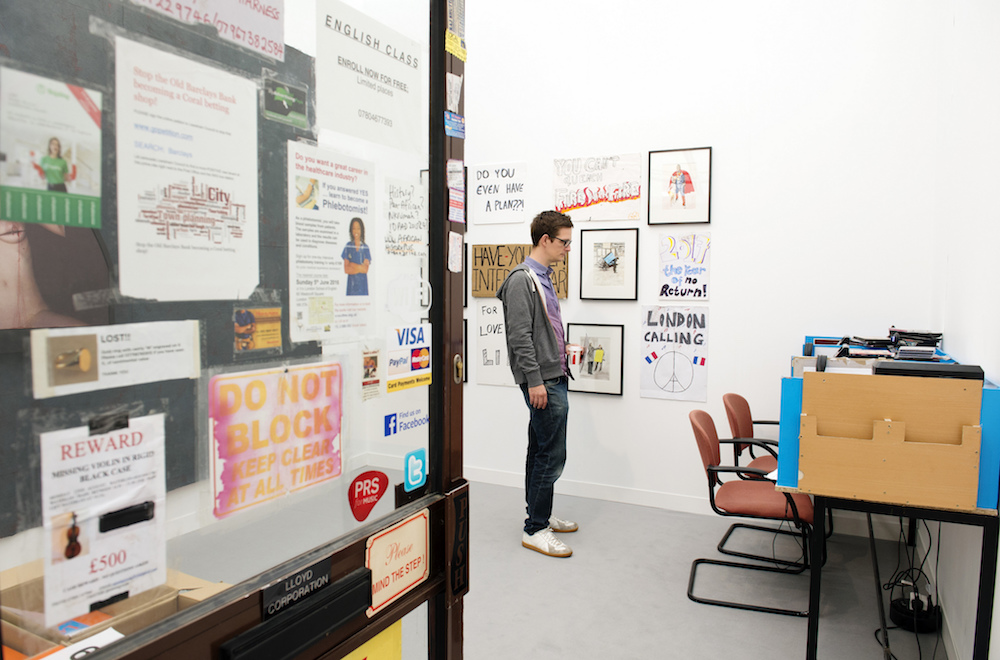People
Frieze Focus Advisor Ruba Katrib on Why So Many Curators Are Working With Art Fairs
Katrib, also the incoming curator at MoMA PS1, shares how she selected galleries for the fair.

Katrib, also the incoming curator at MoMA PS1, shares how she selected galleries for the fair.

Lorena Muñoz-Alonso

Beyond the massive booths of blue-chip galleries that hold court at the entrance of Frieze London, one of the fair’s sections that has been gaining a growing following is Focus, devoted to emerging galleries and artists.
At this year’s 15th edition of Frieze, Focus will gather 34 international galleries that have been open for less than 12 years, covering ground from Cairo to Berlin, a selection that has been overseen by the curators Ruba Katrib and Fabian Schöneich. Participating galleries include Carlos/Ishikawa, Emalin, Arcadia Missa, and Union Pacific from London; Kraupa-Tuskany Zeidler from Berlin; Instituto de Visión from Bogotá, blank projects from Cape Town; and Revolver Galería from Lima.
Ahead of the fair’s opening, we spoke to Katrib, who, after a five-year tenure curating at New York’s SculptureCenter—where she staged critically acclaimed exhibitions including “A Disagreeable Object” (2012), “Better Homes” (2013), and “Puddle, pothole, portal” in collaboration with Camille Henrot—will take up the post of curator at MoMA PS1 on October 15.
First of all, congratulations on your MoMA PS1 appointment. Can you tell us what areas and artists you will be researching, and what can we expect from the beginning of your tenure?
Thank you! I am very excited to begin at MoMA PS1. I will try to take a bit of time at first to gain a better understanding of the context and how to work within it. I am also looking forward to having a moment to consider the program from the inside, while still being sort of an outsider. Overall, I hope to bring in new perspectives and to be responsive to the needs of the museum.
Moving on to Frieze London, what was your formula for choosing the galleries in Focus? What were you exactly looking for?
Fabian Schöneich, my fellow curatorial advisor, and I really thought about the gallery’s entire program alongside the quality of the proposal. It’s also essential to bring together galleries from a range of contexts. It is really wonderful that through this section in Frieze an ambitious group of younger galleries who each contribute a specific discourse to their local contexts are brought together in one place. It is important to take all these factors into consideration when advising on the galleries and proposals for the section. Fabian and I had lots of conversations and were able to share our knowledge and experience with the galleries, artists, and their relationship to the cities they are based in. Of course, many things were new to us too, and we were able to expand our awareness as well.

Proyectos Ultravioleta, winner of the 2016 Focus Stand Prize, Frieze London 2016. Photograph by Linda Nylind. Courtesy of Linda Nylind and Frieze.
What are some of the specific highlights in this year’s section that you are most excited about?
There are a few new galleries participating in the section for the first time, such as Cooper Cole from Toronto and Revolver Galeria from Lima, which is very exciting, and some from regions that haven’t really been represented yet within the fair, including Toronto and Lima, but also Gypsum from Cairo and Antenna Space from Shanghai. As well as some very strong returning galleries, such as Proyectos Ultravioleta from Guatemala City, who won the Focus stand prize last year.
I think we have a great balance this year, some familiar artists showing new works, and others really being introduced in this international platform. Also, LIVE is a great part of the section that includes performances that will run periodically throughout the duration of the fair. We have some really strong presentations.
Curators seem to be more and more present in the art fair world. It’s not such a straightforward association, though: While curators might influence markets as a result of their work, they are not meant to be directly concerned with the commercial side of art. Meanwhile, fairs are all about selling. Why do you think this relationship is growing and how do you feel being part of it?
I have learned a lot working with Frieze for this year. As an advisor, we have no role in the sales aspect. Our position is really to bring in our perspectives and contribute to the research the fair is already embarking upon. I think it is important for fairs to include voices that aren’t solely coming from the commercial realm. Some do this better than others, and I do appreciate that Frieze refers to us as advisors as opposed to curators of the section, which is a more appropriate description of what we do.

Silberkuppe at the Focus section, Frieze London 2016. Photograph by Linda Nylind. Courtesy of Linda Nylind and Frieze.
Last month, in an editorial for Artsy, Armory Show director Benjamin Genocchio wrote: “It is completely possible for fairs to function as a successful marketplace for artists and galleries but also take on a bigger, broader role as cultural institutions of the future.” Do you agree with that statement? Do you think that a successful art fair can also play an institutional role in terms of culture?
Historically and presently fairs from many fields are significant meeting points for the exchange of ideas and the convergence of people. I don’t think contemporary art fairs are really so different. I think they are useful gathering sites and I always manage to see something new, meet someone I end up knowing for a long time, or encounter a relevant idea. I think art professionals do find this kind of event productive and a lot of content and energy emerges from fairs, much of which would probably be hard to account for.
It feels like right now we are living in a moment when new art trends and stars are not so obvious or easily identifiable as in previous periods. How do you spot the next big art movement, or the artists that everyone will be talking about?
I’m really interested in individual practices as well as communities of artists, but not so concerned about the next big thing. I think that is less and less the issue and I hope we can slow down a little and invest more in artists beyond the demands of trends.
In my case, I am reconsidering many ideas and approaches, and thinking a lot about many of the artists I have worked with over the years, such as Rochelle Goldberg with Federico Vavassori and 47 Canal, who are presenting a mini survey of their gallery program, all in Focus. I suppose I’m having a moment of reflection, but I think it’s good to pause and take stock periodically. But I am also still working on a few exhibitions at SculptureCenter until spring 2018—a dance commission, a solo show with Carissa Rodriguez, and a group exhibition—which will finish out my program there, so I’m deep in the research for those shows as well.

Carlos/Ishikawa at the Focus section, Frieze London 2016. Photograph by Linda Nylind. Courtesy of Linda Nylind and Frieze.
You were born in the US to Syrian parents, so the current political situation in the US and Middle East must be particularly resonant for you. In your opinion, how much of a role can art play in tackling these big political questions and problems? Are they effective tools for raising awareness, or can they sometimes be mere tokenism in an industry that is (for the most part) very removed and sheltered from those very problems?
It’s super troubling. And I’m not sure what art can do to address the current political and social conflicts, but I don’t think that’s really the point. We have to try to work with art and engage with ideas and change things, but I am not sure when we would become cognizant of its efficacy, if that it is at all possible. I think it’s helpful to remember that we are really in the long game working in contemporary art, and I’m wary of attempts at quick repairs and responses. There are perhaps better forums for immediate action. However, it is probably the structures around art that really need to adapt and shift and work toward positive change more than the art itself.
Frieze London 2017 runs from October 5-8 at Regent’s Park.